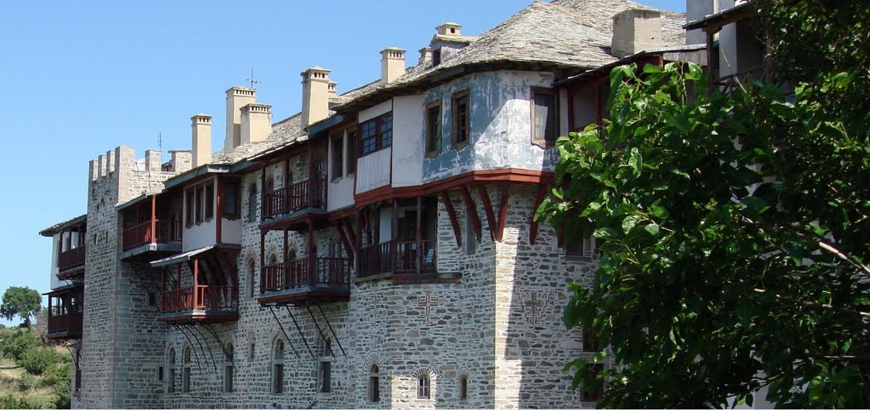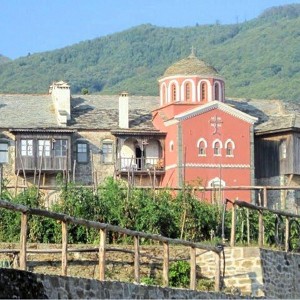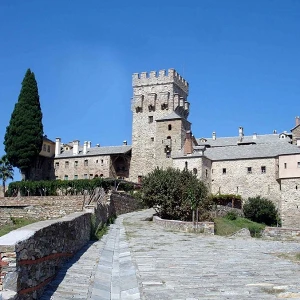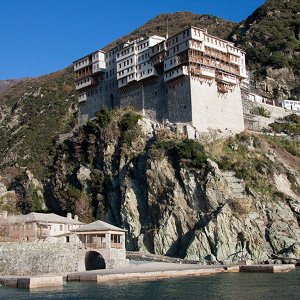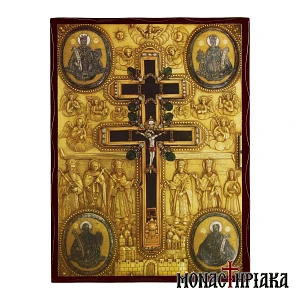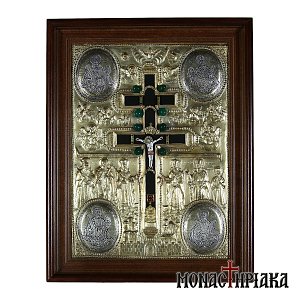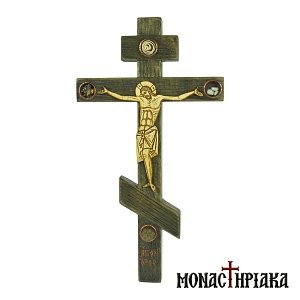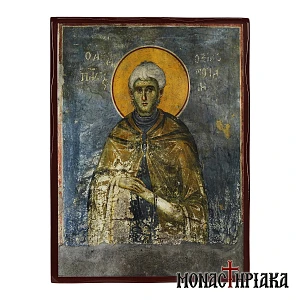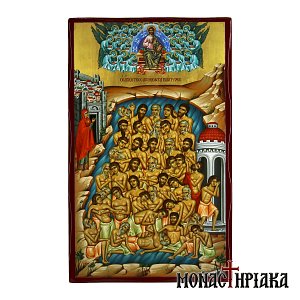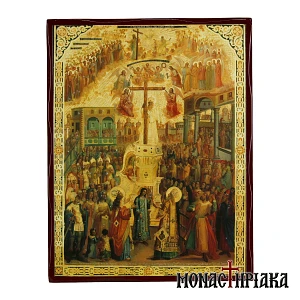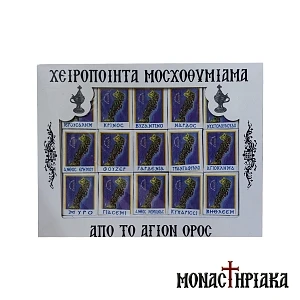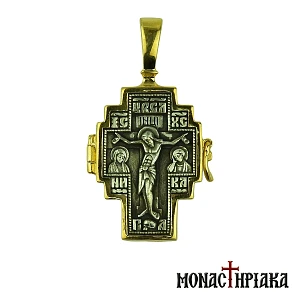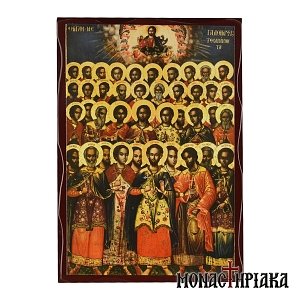Where is the Holy Monastery of Xiropotamos and how can a visitor reach it
The Holy Monastery of Xiropotamou is located at an altitude of 200m. from the sea, west from the Holy Monastery of Simonopetra and east from the Monastery of Saint Panteleimon.
If a pilgrim starts from Dafni, the port of Mount Athos, he has to cross a path about half an hour's walk, in a north-easterly direction. This path is a narrow dirt road, with a total length of 11 km, that connects Dafni with Karyes, the capital of Mount Athos. On the other hand, if a pilgrim starts from Karyes, it will take about two hours to walk on this dirt road, in the opposite direction.
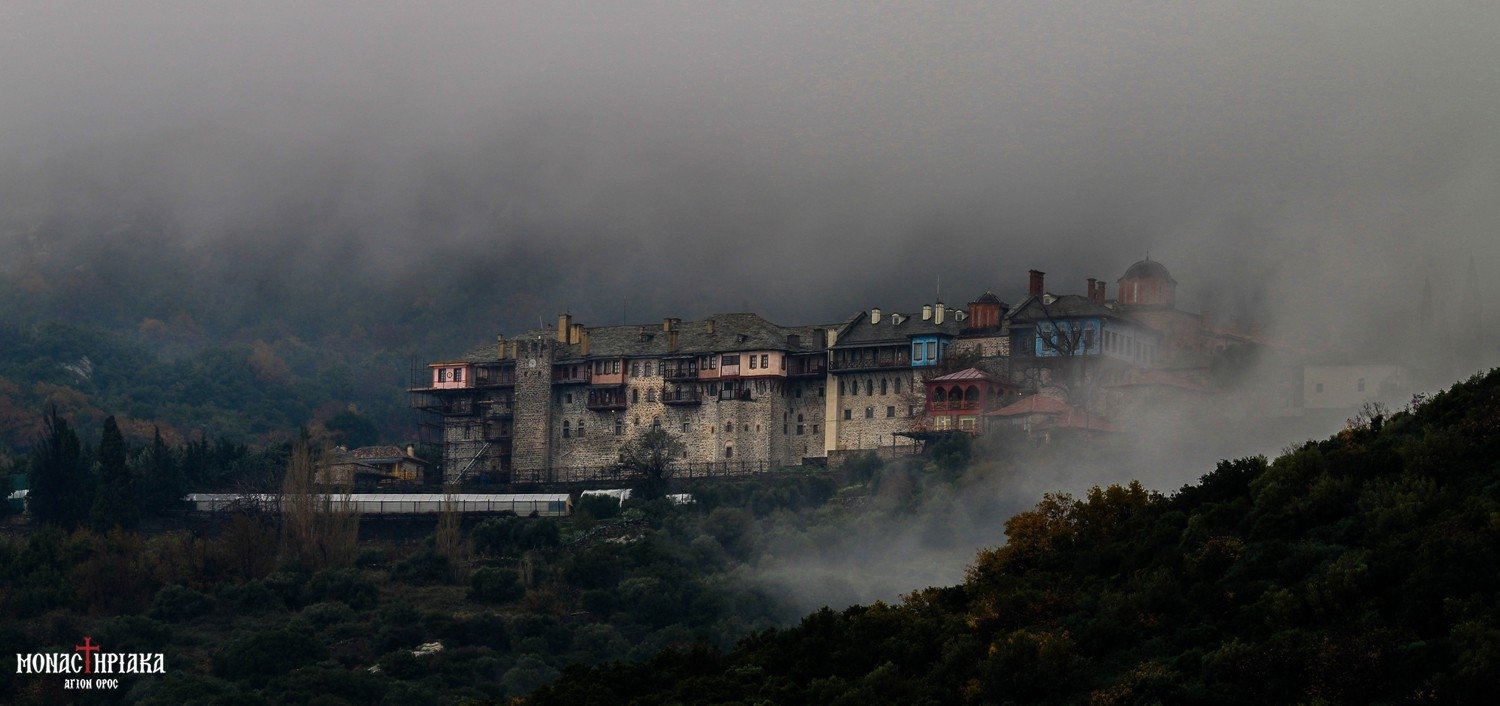
When was the Holy Monastery of Xiropotamou founded and who is considered the first founder
According to the tradition, the Holy Monastery of Xiropotamou was founded by Empress Pulcheria, wife of Emperor Markianus, in the year 424 AD.
On the other hand, there are stories that point to Constantine VII the Porphyrogenitus or Romanos I Lekapinos as the founders of the Xiropotamou Monastery.
However, according to historical sources, a more probable version for the real founder of the Monastery seems to be the monk Pavlos Xiropotaminos.
The foundation of Xiropotamou Monastery dates back to the end of the 10th century by the monk Pavlos, who signed the first charter or Typikon (972 AD) of Mount Athos.

The heyday of the: 11th – 15th century
The Holy Monastery of Xiropotamou went through a long period of prosperity, starting from the 11th century and reaching the beginning of the 13th century. The monks had on their side the Emperor Palaiologos Michael VIII, who loved the Monastery and supported it financially.
In 1280 a great fire destroyed a large part of the Xiropotamou Monastery and the emperor Andronikos II Paleologos greatly helped in the restoration of the monastery, offering financial resources and donations. For his great contribution to the Monastery, the emperor Andronikos II Paleologos is honored as one of the new founders of the Monastery.
During the 14th and 15th centuries, there were many royals from Serbia, who offered financial support to the Monastery of Xiropotamou. With this money, high defensive walls and towers were built.

The period of decline of the Holy Monastery of Xiropotamou: 16th century
The 16th century was difficult for the Holy Monastery of Xiropotamou, which gradually fell into decline. At the beginning of the 16th century, in 1507 AD. the monastery burned down again. This time, Sultan Selim I greatly helped in the relief and restoration of the monastery.

Sultan Selim I decided to help the Monastery after a dream he had with the 40 Martyrs in the shape of soldiers, who promised him that they would help him defeat the enemies, if he helped build the Monastery of Xiropotamou. Thus, the Monastery was renovated from the ground up.
In 1760, a new period of prosperity began for the Holy Monastery of Xiropotamou with the support of the Ecumenical Patriarchs, Timothy II and Methodius I.
In addition, Caesarios Daponte made a long tour, in many parts of Greece, but also in the Transdanubian area to collect financial support for the Holy Monastery of Xiropotamos.
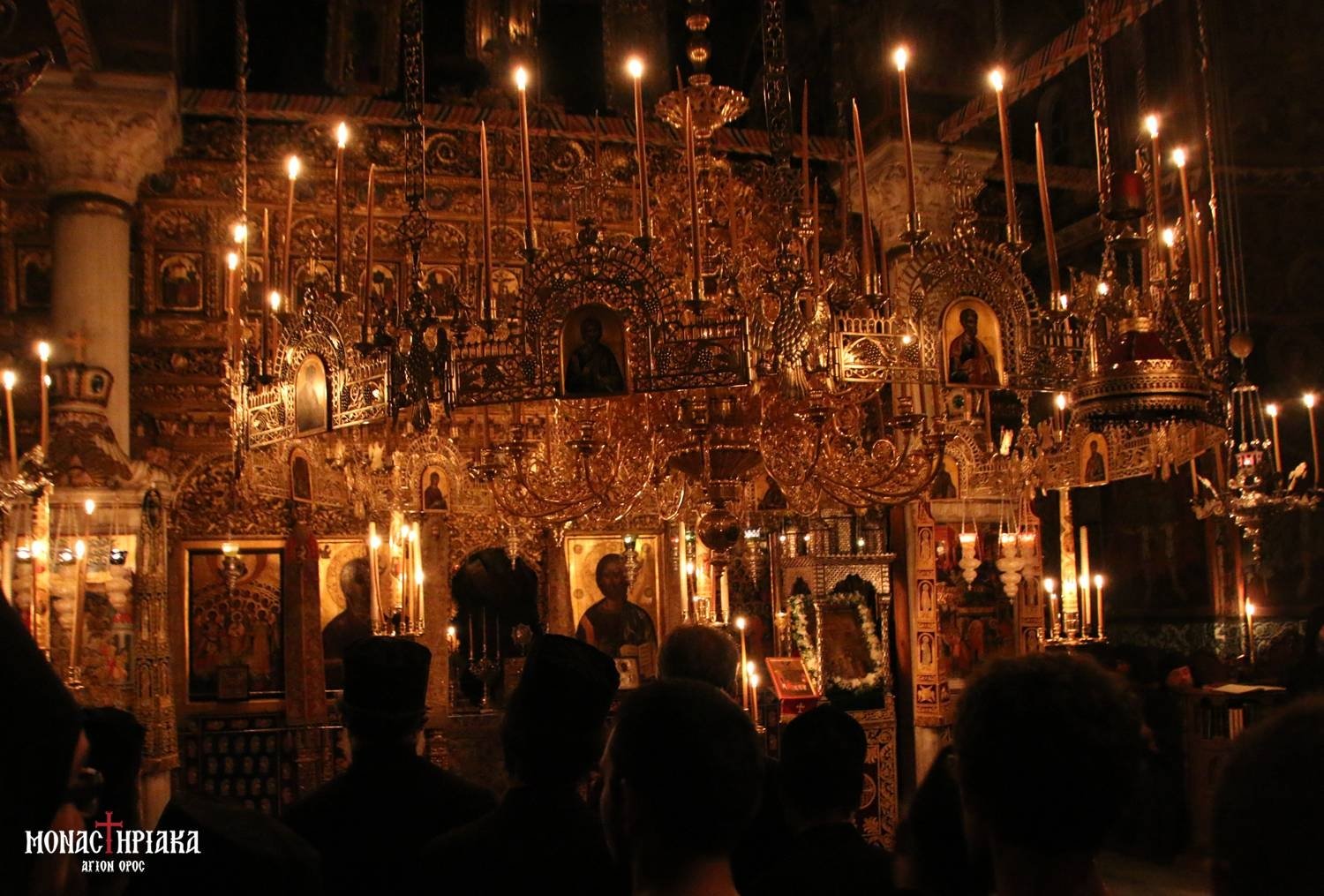
He lived for several years in the Monastery of Xiropotamou and oversaw the rebuilding of the Church during the period 1761-1763. The monk Kaisarios Daponte was laid to rest in the year 1784 and many of his manuscripts are kept in the Library of the Monastery.
The Church of the Holy Monastery of Xiropotamou 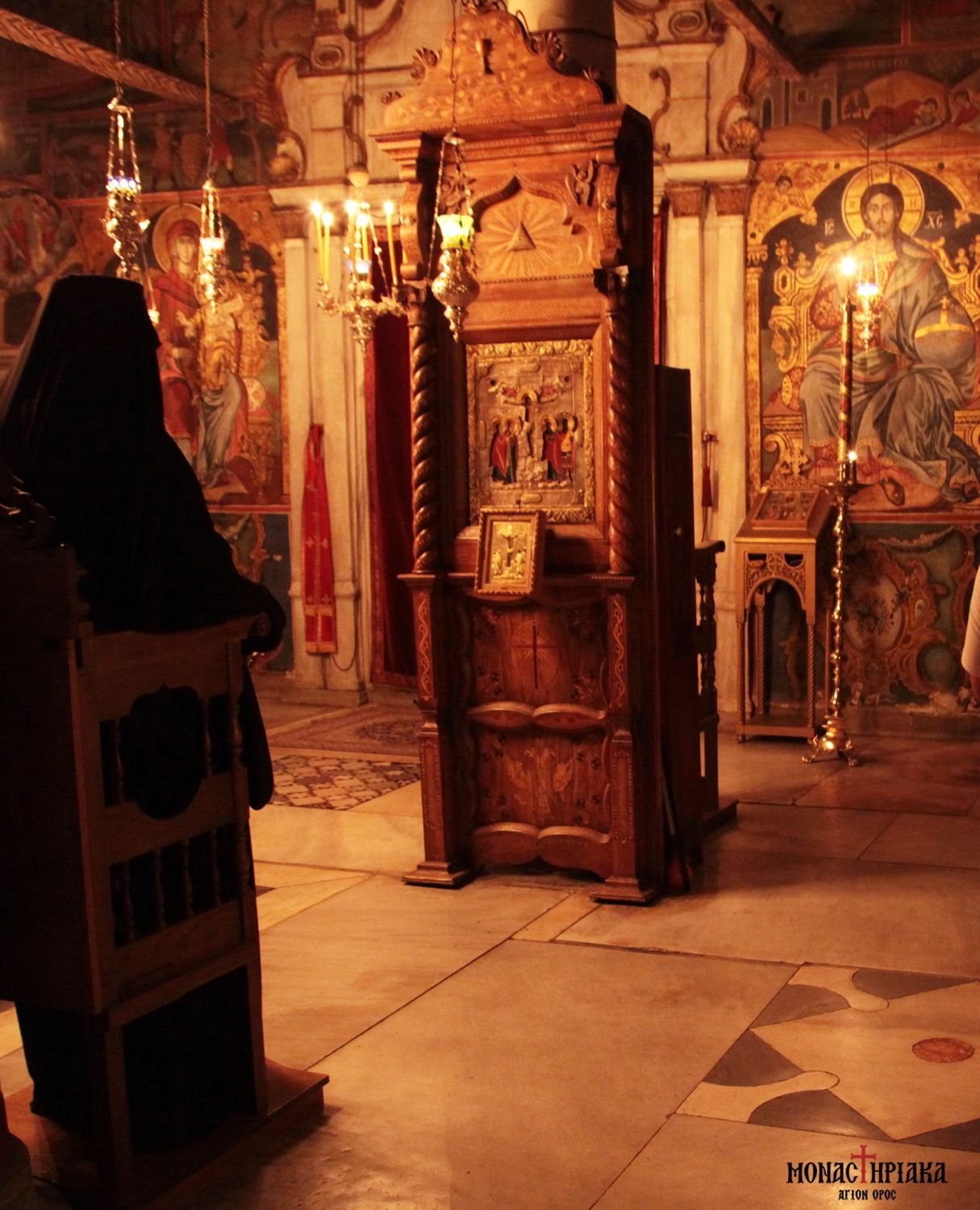
The Church of the Monastery of Xiropotamou is built in the center of the courtyard, it is dedicated to the 40 Martyrs and celebrates on March 9.
Due to the terrain, the Church is facing North and on the outside there is an inscription written by the monk Caesarios Daponte, where the history of the Monastery is mentioned. There are 200 portable icons in the Church of the Holy Monastery of Xiropotamou.
Since 1981, the Holy Monastery of Xiropotamou has been operating in the communal system and occupies the 8th place in the hierarchy of the monasteries of Mount Athos. The Monastery owns the port of Dafni, six dry river cells, seven chapels and nine chapels.
The Library and Relics of the Holy Monastery of Xiropotamou
In the Library of Xiropotamou Monastery there are 409 manuscripts and more than 4,000 printed books.
The Sacred Wood, the "Phiale of Pulcheria" and the holy relics of 61 Saints
In the Holy Monastery of Xiropotamou there is the largest piece of Sacred Wood in the world, as it is 31 cm long, 16 cm wide and 25 cm thick.
According to tradition, this part of the Holy Wood was given as a gift to the Monastery by Emperor Romanos I or by Empress Pulcheria. In fact, a hole from the nails of the Crucifixion can be found on the part of the Holy Cross. Thus, the Monastery of Xiropotamou also celebrates on the Holy Cross (September 14).
In addition, in the sacristy is kept part of the gifts of the Biblical Magi, who worshiped the birth of the Lord Jesus Christ, part of the Crown of Thorns, the Sponge and holy cloak.
Another important relic kept in the Holy Monastery of Xiropotamou on Mount Athos is the famous disc of steatite stone, known as the "bottle of Pulcheria".
In the sacristy of the Monastery, the sacred and holy relics of sixty-one saints are kept, including the bones of the Holy Forty Martyrs. Furthermore, four episcopal rods, of which two are made of electron, gold-embroidered sacred Vestments and liturgical Vessels are also preserved with great reverence.
Contact with Monastery of Xiropotamou:
Phone: +30 23770 23733
Email: xeropotamou@yahoo.gr
